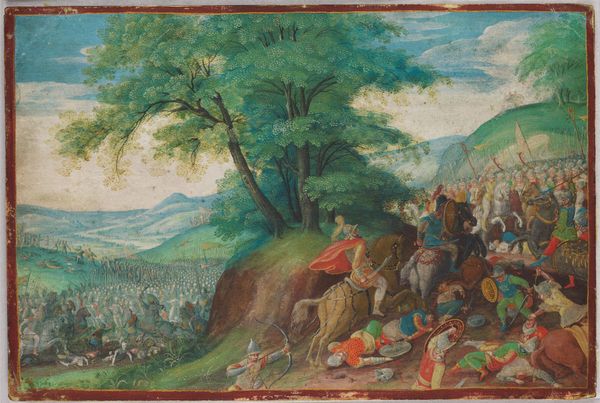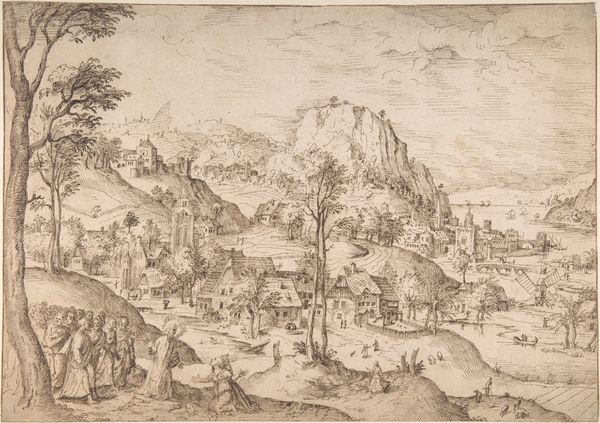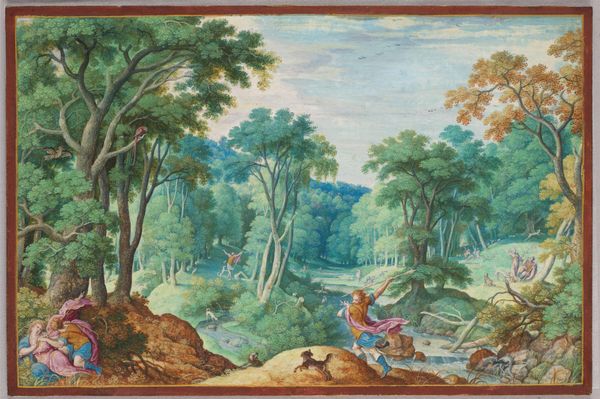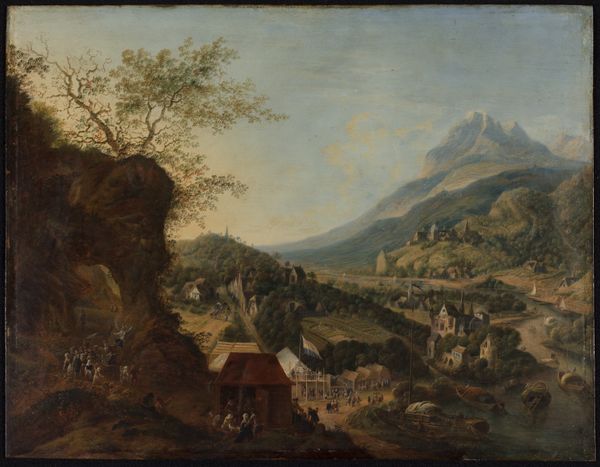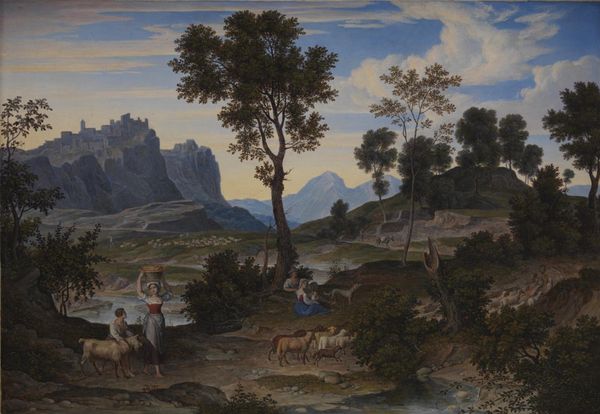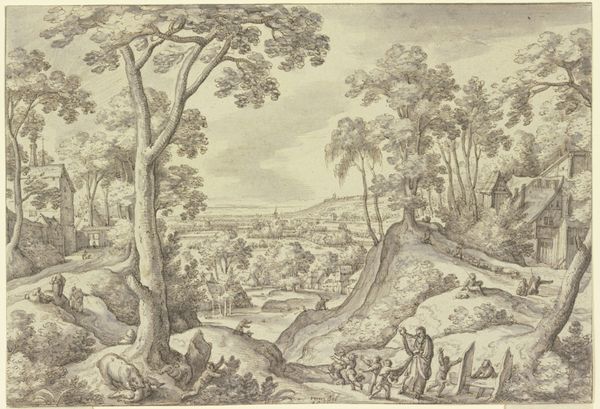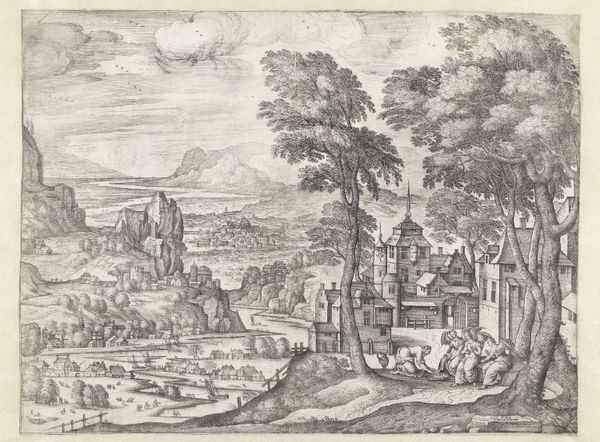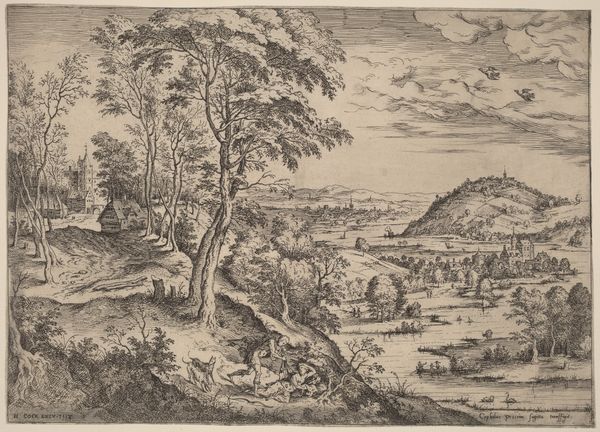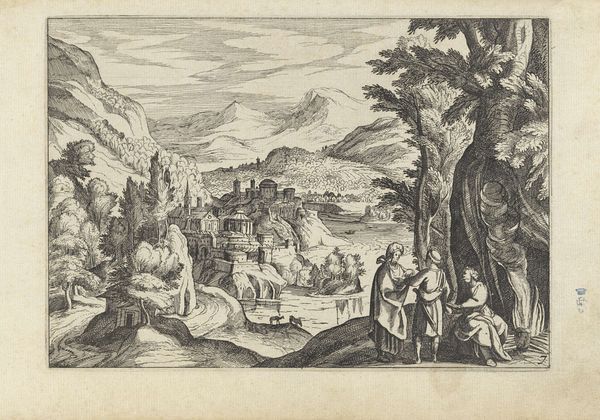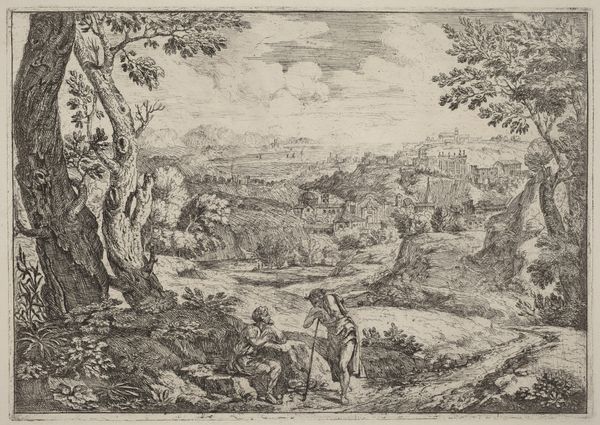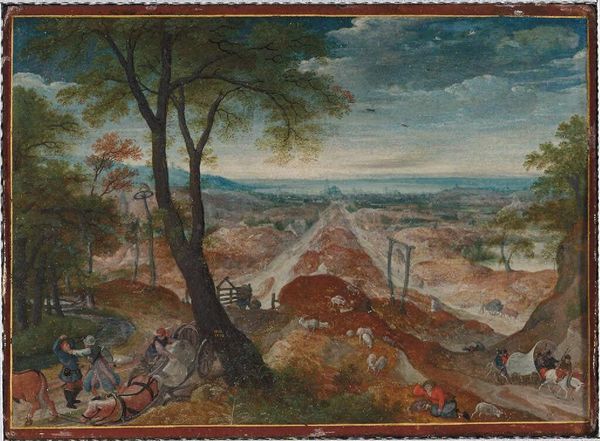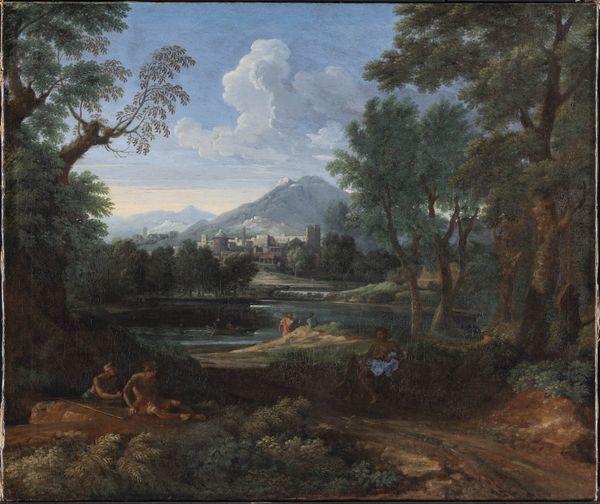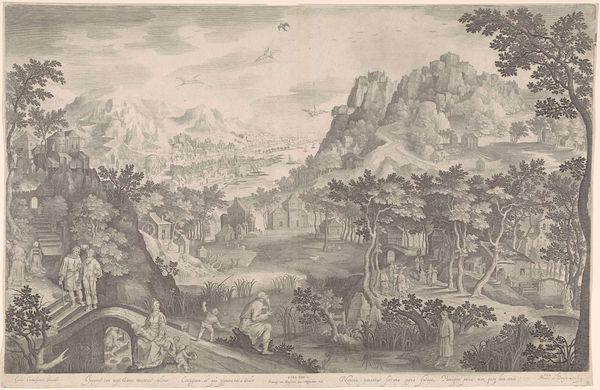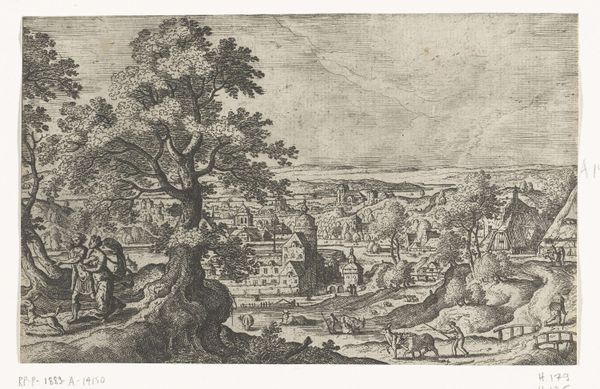
painting, watercolor
#
animal
#
painting
#
landscape
#
mannerism
#
figuration
#
handmade artwork painting
#
oil painting
#
watercolor
#
13_16th-century
#
genre-painting
#
history-painting
#
natural environment
#
watercolor
#
realism
Dimensions: 13.3 x 20.3 x max. 0.2 cm
Copyright: Public Domain
Curator: This is Hans Bol's "Landscape with Jacob at the Well," painted around 1593. It's currently held at the Städel Museum. My immediate reaction is to wonder at its vast scope. What’s your take? Editor: It feels like an idealized vision of pastoral life. There’s a definite harmony created by that soft watercolor palette, despite all the figures going about their business. The biblical narrative is almost incidental. Curator: Indeed. The religious subject becomes almost secondary to the sheer display of everyday life within the Flemish landscape, doesn't it? Jacob's encounter is pushed to the far left, almost hidden among the trees, while the real focus is on the village scene, the distant cityscape, and that impossibly blue mountain range. Editor: That's typical of mannerist landscapes, I think – this ambition to incorporate so many viewpoints into a single picture, making for a real show of skill. It makes the social hierarchy of labor visible too – the shepherds, the villagers… a whole economic system bustling in the background. Curator: Precisely! And Bol manages to incorporate several symbolic elements. Water wells throughout art history often signal purity, new beginnings, perhaps even subconscious thoughts. In that light, the painting gains considerable psychological and narrative weight. It speaks to those quiet but critical encounters that change one’s path forever. Editor: It's also interesting to consider how these idyllic images shaped civic identity. This painting suggests the ideal harmony of human action embedded into the "natural" world. These rural and naturalistic themes would play differently to audiences in urban and more complex landscapes, inviting contemplation on simpler, moral existences. Curator: I hadn't thought about that… how the 'natural' state actually creates a model for ethical, moral being. It's also striking how art created and collected then can have profound psychological reverberations across cultures and eras. These paintings preserve values that seem to reappear, adapt, but somehow endure through the centuries. Editor: Right, there is this projection of continuity through the art market, private and public collections which helps promote this sense of national or cultural values across time, sometimes even in tension with historical reality. Thank you for pointing out these subtle details of human symbol making and their continued cultural potency!
Comments
No comments
Be the first to comment and join the conversation on the ultimate creative platform.
